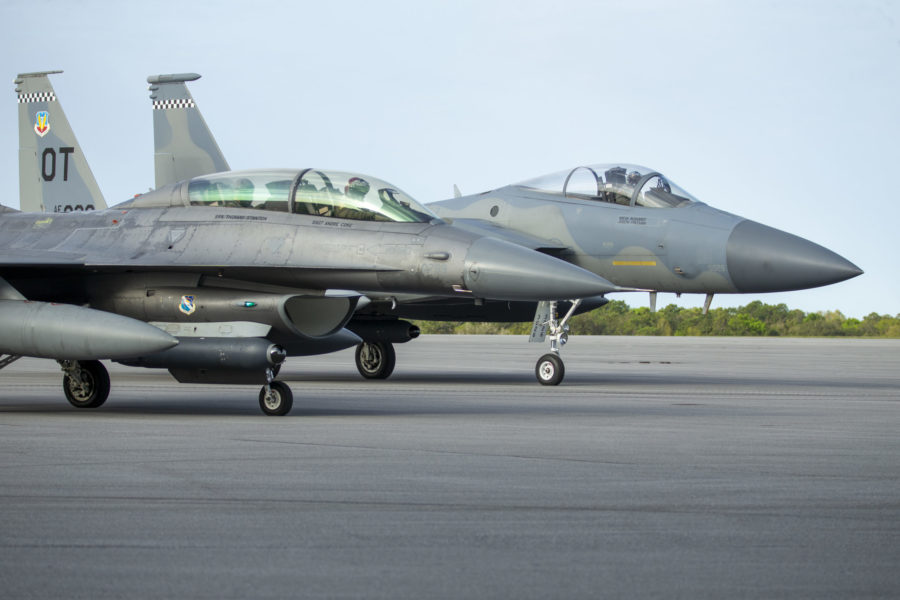An F-15 and an F-16 jointly and passively detected, tracked, and triangulated an aerial target using the infrared search-and-track Legion Pod on April 7, the Air Force’s 53rd test wing announced.
This capability will be useful as U.S. fighters go up against adversary aircraft having low-observable features that reduce their radar cross-section, making them hard to track and target using radar alone.
In the test, an F-15 and an F-16, each equipped with a Legion Pod, detected a target and then used the pod’s advanced datalink to “passively triangulate target position without the use of radar or other active ranging sources,” the 53rd Wing said in a press release. It was the first “multi-platform use” of the IRST pod, the unit said.
Infrared search-and-track technology “provides a key enabler in the long-range kill chain as well as the ability to locate targets in a multispectral domain,” said Lt. Col. Jeremy Castor, sensors program manager with the F-16 Operational Flight Program combined test force.
Any large-force scenario, he said, “includes multiple aircraft types, each with different viewpoints of the battlespace. The ability to share data” provides information “they would not be able to get, otherwise.”
The Legion Pod has a common interface that allows it to be mounted on any aircraft with minimum impact on that jet’s core software. This open-systems capability “opens the door for integration, with minimal effort, onto other fighter aircraft,” like the F-15EX, the 53rd Wing said.
Continued testing will explore “operationally relevant capabilities” with an advanced datalink, Castor said. The eventual goal is for any USAF aircraft to be able to carry and employ the Legion Pod.
The advanced datalink was first tested successfully during the Northern Edge exercise in April 2021, with a two-ship of F-15s. It was tested on a two-ship of F-16s at Eglin Air Force Base, Fla., in December 2021. The April 2022 test was the first using dissimilar aircraft types and represents “a milestone in the program’s ongoing progress,” the wing said.
The two-week evaluation was collaboratively run by the Combined Test Force, the 85th Test and Evaluation Squadron, the 40th Flight Test Squadron, Lockheed Martin Missiles and Fire Control, and the Air National Guard/Air Force Reserve Command Test Center.
